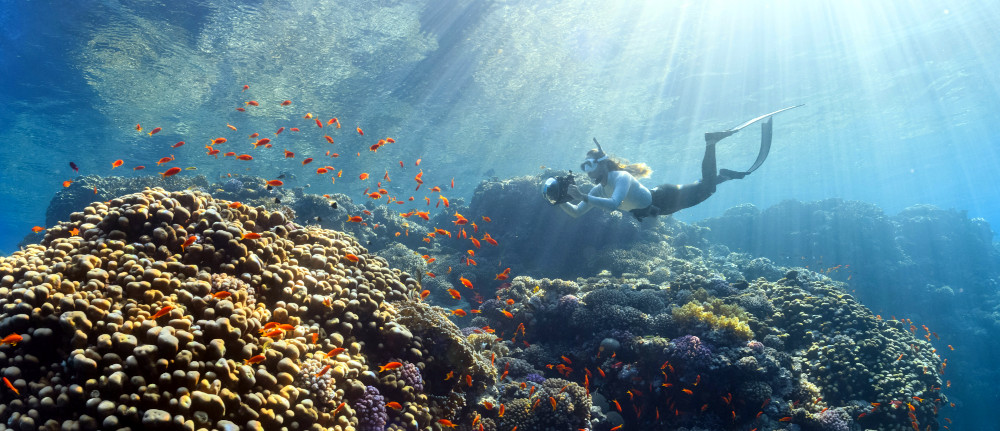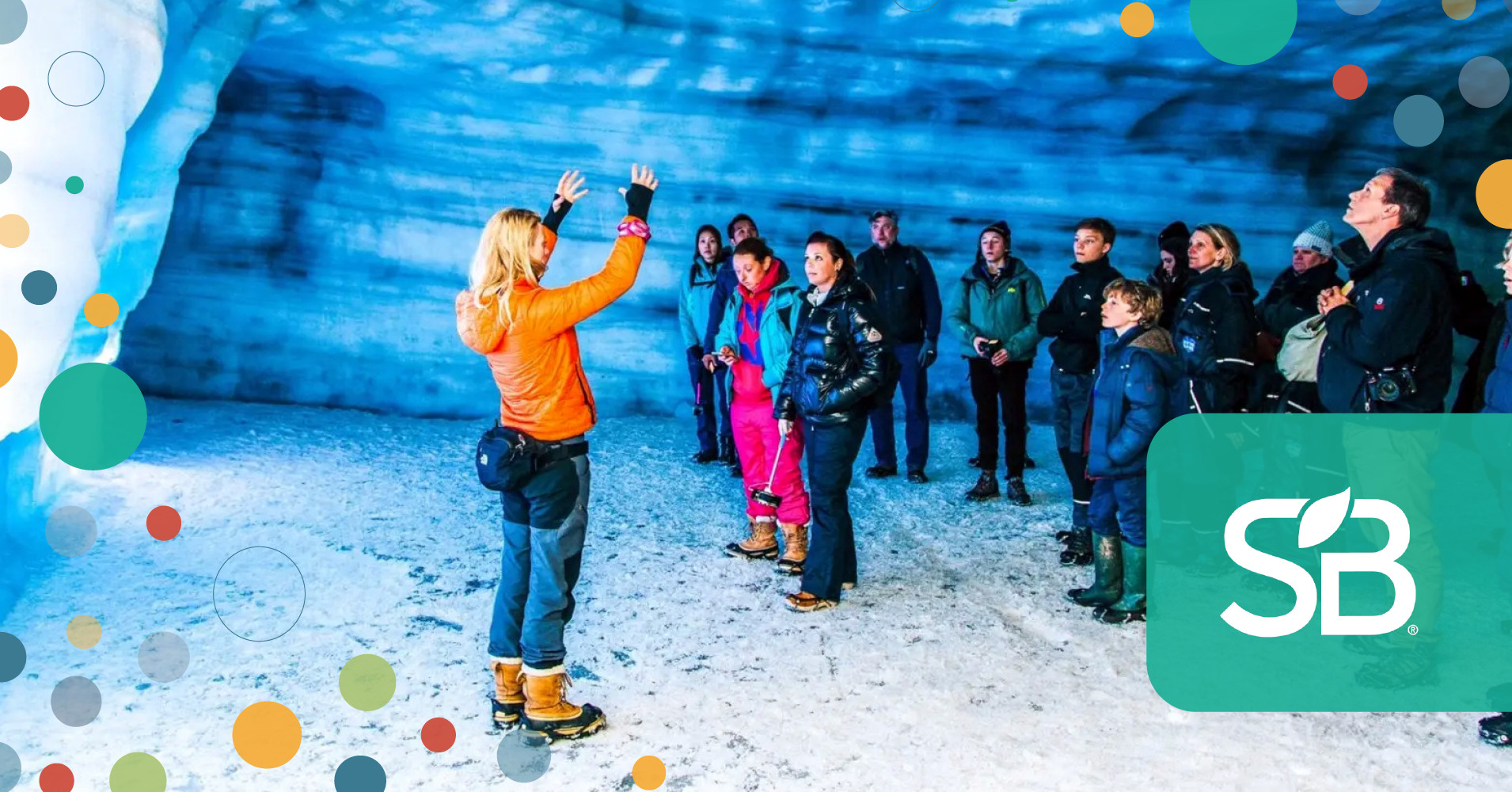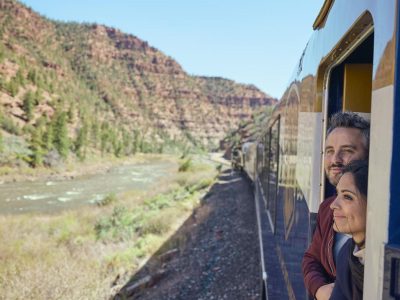Walking across a sea-level glacier in Iceland, a tour guide points out how
the landscape has changed in recent years. The population of cheeky puffins on a
cliff’s edge has dropped by 20 percent since the start of the century due to
rising ocean temperatures, the guide notes. Over a meal with fellow travelers
that same day, the conversation turns to alternative energy sources helping the
country curb its environmental footprint — a pertinent topic, given the meal
takes place in a geothermal greenhouse.
In Iceland, like many places around the world, signs of the climate crisis
abound. Some visitors see the country’s landscape as a single snapshot in time;
they remain oblivious to global warming’s impact as they take in the waterfalls,
wildlife and wide-open vistas. But for visitors traveling with the
Transformative Adventure to Iceland to Inspire Climate Action
tour,
global warming frames the entire context of the trip.
“Iceland’s unique landscape and fragile environment of glaciers, volcanoes, and
geothermal features serves as a living classroom for participants to learn about
climate change,” said Jennifer
Spatz, founder and CEO of Global
Family Travels, which hosts the trip.
Not so long ago, using the climate as an overriding theme for a guided tour
would have been unheard of. Tourism has historically shielded people from “the
real world,” but it can no longer deny the reality in which it operates. And the
reality is, the impacts of climate change can be seen and felt everywhere.
The 50 Liter Home: Lessons from a multi-industry global collaboration
Join us as leaders from Electrolux and Procter & Gamble share insights and progress to date on ‘The 50 Liter Home’ — a partnership aimed at reducing water consumption in the home, while also generating awareness that leads to better lifestyle choices for sustainable water use — Wednesday, Oct. 16, at SB’24 San Diego.
This has precipitated the question of not if but how travel service
providers should communicate with tourists about the climate. Several solutions
have surfaced — including developing incentive
programs
encouraging climate-positive behaviors, incorporating voluntary and mandatory
responsible travel
pledges,
and publishing carbon
labels
alongside other relevant tour information.
Climate-focused trips are yet another communication tool. They are intended to
convey the urgency of the crisis through hands-on activities; in-person
conversations; and encounters with the people, places and wildlife most impacted
by a warming planet — and trip designers hope travelers will take these lessons
home with them.
“Whether it is local or global, travel experiences like this Iceland trip offer
a powerful opportunity to educate people about climate change by immersing them
directly in environments and communities that are impacted by, and actively
responding to, global environmental challenges,” Spatz said.

Image credit: Neom
This tour is only one of a growing selection of climate-focused experiences.
Natural Habitat’s Climate Change & Our Wild World series of
trips, for
example, take place in the Arctic and the Amazon. Conducted in
collaboration with World Wildlife Fund (WWF), the trips offer insight
into WWF’s conservation efforts and how the organization is protecting “humanity
from the worst effects of climate change,” according to Natural Habitat’s
website.
Similarly, Earthwatch offers several such trips — including its 11-day
Climate Change at the Arctic’s Edge
trip and
five-day Recovery of the Great Barrier
Reef, in which
guests help scientists with coral recovery. The active, 9-day Wildlife in the
Changing Andorran
Pyrenees
tour entices travelers with the promise that they can “help discover and protect
this delicate Alpine environment from climate change, and from ourselves.”
Therein lies one of the uncomfortable truths as it relates to the intersection
of tourism and the climate: Climate change is not only affecting tourism — it
is, in part, caused by tourism. By encouraging people to travel to fragile
destinations specifically to learn about the climate, is the tourism industry
exacerbating its negative impacts? Additionally, is the decision to run
climate-focused tours in fragile destinations contributing to last-chance
tourism,
or the need to “see it before it’s gone?”
“Visiting places like the melting glaciers in Iceland, coral
reefs in Hawaii or the Caribbean, or the disappearing coastlines of island
nations makes the effects of climate change real and tangible,” Spatz said.
This may be true, but according to various research studies, that doesn’t
necessarily equate to action. Research published in
2023,
for example, notes tour operators to Antarctica have been effective at
enhancing public awareness and conservation concerns but have failed at creating
transformative memories — which are more likely to produce significant impacts
on a person’s life.
Arguably, it’s far better to offer climate-specific tours that place the topic
front and center versus shielding this reality from travelers — even if these
experiences take place in fragile destinations. However, other companies are
adopting other communication strategies — including naturally integrating
climate-related topics into all offerings. Further, they’re empowering local
frontline providers to share their own experiences in these places they call
home.
Ruth Franklin, co-founder and
director of Secret Paradise Maldives, noted both
the importance of tourism in the Maldives (a low-lying island nation) and the
need to point out the impact of the climate crisis to tourists.
“The starting point is generally connected to either seagrass or mangroves when
we visit as part of an activity; or during an island tour where it can be
highlighted through observation of beach erosion, removal of shoreline
vegetation, (and) only the roots remaining from palm trees,” she said. “By
showing the surroundings and explaining the effect of climate change through
personal observation over a period of time, we aim to make it a personal
connection.”
Tourism’s recovery has been robust, and there’s no sign of it slowing
down.
Similarly, though unfortunately, the climate crisis is also moving full speed
ahead. The two can’t be separated, so it is important that the climate be
addressed within the tourism industry. This may be through the act of travel,
such as with climate-specific tours. But this can also happen more holistically
and even subtly along all touchpoints with travelers, by highlighting the
broader picture of how tourism and the climate impact each other.
“Even if travelers are initially drawn to the trip for the chance to visit
Iceland, which receives more than 1.5 million visitors a year, I do hope that
seeing such a trip offered would raise awareness about the profound
environmental changes happening,” Spatz said. “It’s not just about visiting a
popular destination, but about fostering a deeper understanding of the issues
that affect these iconic places.”
Franklin agreed: “By educating guests about the impacts of climate change, and
how tourism helps the country economically and aids in the development of
locals, we are using our voice to encourage greater awareness wherever they may
travel in the world.”













